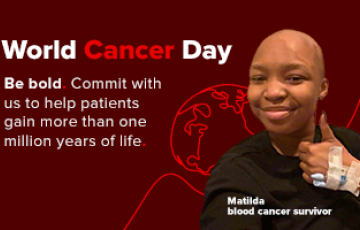Search Results
Tretinoin
Tretinoin is an FDA-approved drug that is used to induce remission in patients who have acute promyelocytic leukemia (APL, also known as "M3 AML"), a type of acute myeloid leukemia (AML), with the t(15;17) translocation and/or the presence of the PML-RARa gene and who are intolerant of, refractory to, or have relapsed from anthracycline-based chemotherapy.
211Astatine-CD123 Radioimmunotherapy for Cancer (Stem) Cell-Directed Treatment of Acute Leukemia
Because acute leukemias are very sensitive to radiation, radioisotopes are ideal payloads to arm antibodies against these difficult-to-cure, aggressive blood cancers. Here, we will develop fully human anti-CD123 antibodies carrying the highly potent alpha-emitter astatine-211 (211At) as a new therapy for acute leukemia.
Bold goal, bold action
As we observe World Cancer Day, I’m reflecting on my own family’s experience with blood cancer, the children with blood cancer I have had the honor of knowing, and the many individuals and families who have been impacted by a blood cancer diagnosis.
Our work at The Leukemia & Lymphoma Society (LLS) has had a positive impact on so many, but we can do even more to accelerate progress for the blood cancer patients we serve.